10 White Cat Breeds That Will Melt Your Heart
Looking to adopt a white cat? Learn about which cat breeds have the cutest white varieties.
Looking to adopt a white cat? Learn about which cat breeds have the cutest white varieties.
by Adopt a Pet, | May 1, 2024

Olga Smolina SL / Shutterstock
If you’re interested in welcoming a cat into your home and love the color white, you’re not alone: It’s such a popular color that entire breeds have been developed just for their white fur genes. Of course, not all white cats are solid white: many of these breeds also have white coats with some variation of pattern and color around their faces and paws (such as calicos and tuxedos).
When considering adoption, remember that color doesn’t influence personality. But many of these cat breeds are especially friendly and docile and thrive in social environments; they get along with kids, other cats, and even other animals. So, even if you don’t care about coat color, a white cat might be the right animal companion for you based on temperament alone. Unlike solid black cats, solid white cats are rare and associated with certain health conditions such as deafness, but these adaptable cats still make great pets.
Here’s a list of some adorable white cat breeds.
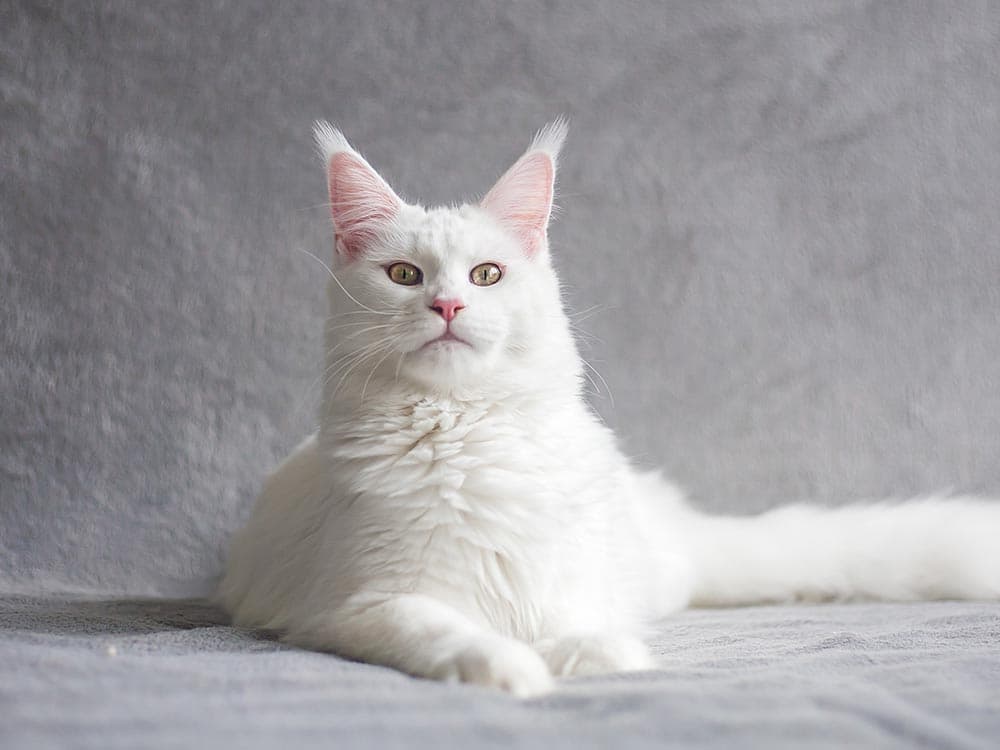
Kanashi / Unsplash
Originating from central Anatolia, the Turkish Angora is now known as a familiar domestic breed that has been in the U.S. as early as the 17th century. This breed generally has a pure white coat that is fluffier than the coat of a Domestic Shorthair, and also has bright blue eyes.
Many completely white animals have issues with hearing, and the Turkish Angora is no exception; while they adapt well to deafness, it’s best to keep deaf cats indoors for their safety. This breed can also be vocal, not realizing how loud their loving meows are. Angoras are very social and love being around families and people of all ages, and don’t like being alone. They’re also very smart, so if you leave them alone, expect revenge.
Weight: 5 to 10 pounds
Lifespan: 12 to 18 years
Best Characteristic: All the fluff

Sparow / AdobeStock
Siberian cats come in all colors, but white is a popular look for this fluffy Russian breed. This breed, which is sometimes called a “Siberian Forest cat,” has a long thick (and potentially low dander) coat that usually only needs to be brushed once a week — though they may need more in the heavier shedding seasons of spring and fall. These cats are playful and generally love people and other cats, so they’re a good fit for anyone who will enjoy keeping them active — and who doesn’t mind a cat following them from room to room.
Weight: 12 to 25 pounds
Lifespan: 11 to 16 years
Best Characteristic: Constant companion
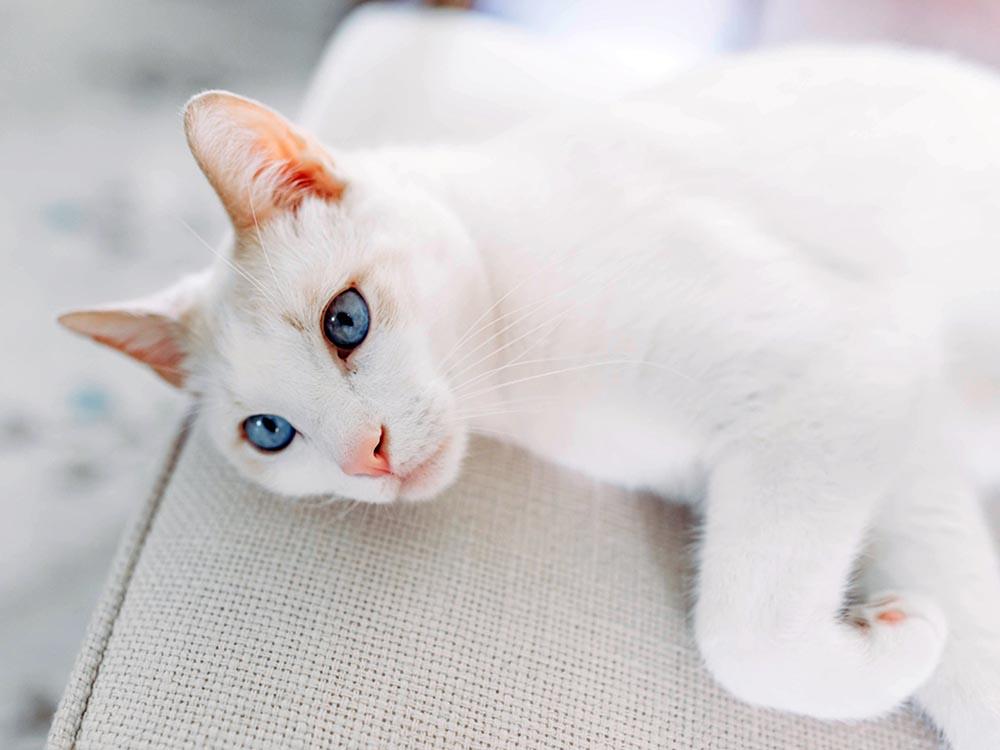
Emily Jean Thomas / Stocksy
Most people with cats in the U.S. are caring for a Domestic Shorthair. These cats are the “mutts” of the feline world, which produces a delightful mix of characteristics. But generally, Domestic Shorthairs have thick, short, and dense fur and a stocky, muscular bodies. These are our sturdy house and alley cats; though, obviously, they make very good pets too. Domestic Shorthairs can come in a variety of colors, including orange, black, brown, red, and white. These common cats can be tabbies, tuxedos, and even calicos too.
Weight: 8 to 12 pounds
Lifespan: 6 to 16 years
Best Characteristic: One-of-a-kind
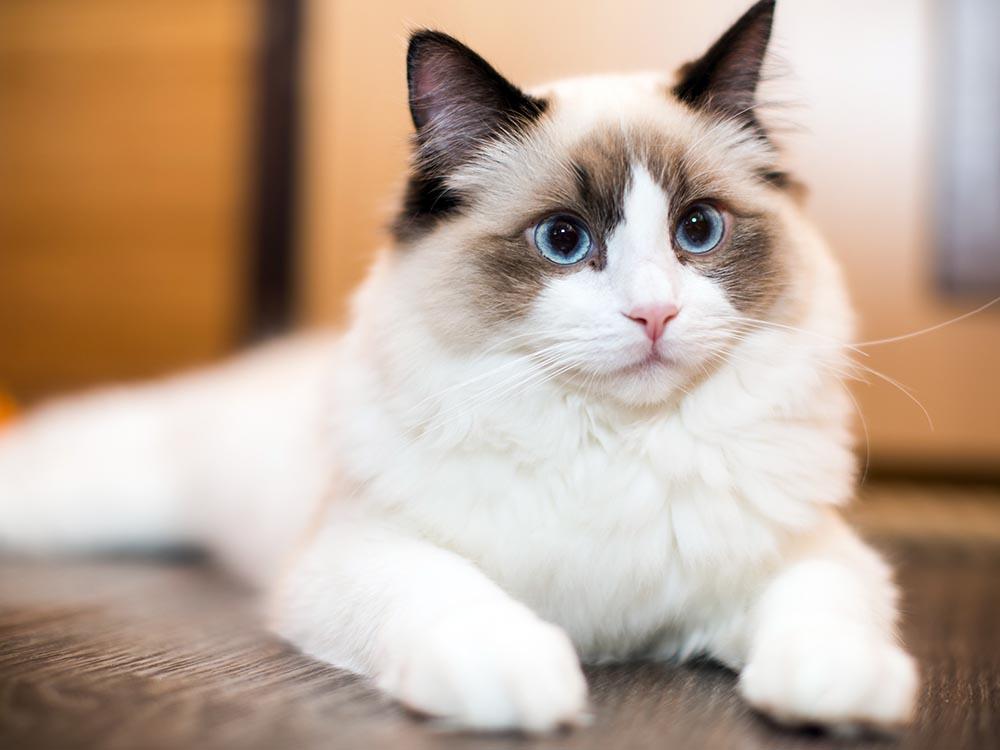
Peredniankina / AdobeStock
The Ragdoll is a gorgeous cat who usually has distinct colorpoint patterns around their faces and paws, and beautiful blue eyes. Ragdolls come in several shades of white, including lilac, blue, and cream. Their hair is long and silky and requires a good amount of brushing and care.
This breed is incredibly docile and is known for being sociable. Ragdolls are also very devoted to their people, so expect the affection and loyalty of a dog in a soft cat body. They’re bad cats for the outdoors as unfamiliar people and things can freak them out easily, and they have a bad sense of direction. The breed, which was developed by American breeder Ann Baker in the 1960s, can be predisposed to a few health issues, especially obesity, heart disease, and urinary tract issues.
Weight: 10 to 20 pounds
Lifespan: 12 to 20 years
Best Characteristic: Loyal

Boris Jovanovic / Stocksy
Persian cats have many distinctive characteristics, but are especially known for their flat noses and wide-set eyes. Their long coats come in many colors but white is one of the most popular. This long-hair breed arrived in Italy from Persia around 1620, or at least that was their first mark on the recorded map.
Persian cats make excellent pets but require some extra care — especially help with their grooming. They can be susceptible to eye issues, overgrown nails, haircoat disorders, and dental disease, so they need attentive pet parents to maintain their health. But they’re very good for a cuddle.
Weight: 8 to 12 pounds
Lifespan: 15 to 20 years
Best Characteristic: Easygoing

zhang kaiyv / Pexels
Often confused for the similar Ragdoll, the Ragamuffin was established as a separate breed in 1994; the breed is thought to be a Ragdoll crossbred with other types of long-haired cats. White, brown tabby with white, tortoiseshell and mink, and blue are the most popular Ragamuffin colors.
Much like their adorable cousins, Ragamuffins are very friendly, placid, and covered in thick fur. They have more color and pattern variation than Ragdolls. These kitties get along well with other pets and usually love being held. They require regular brushing but don’t excessively shed considering how much hair they have.
Weight: 8 to 20 pounds
Lifespan: 12 to 18 years
Best Characteristic: Lap-cat
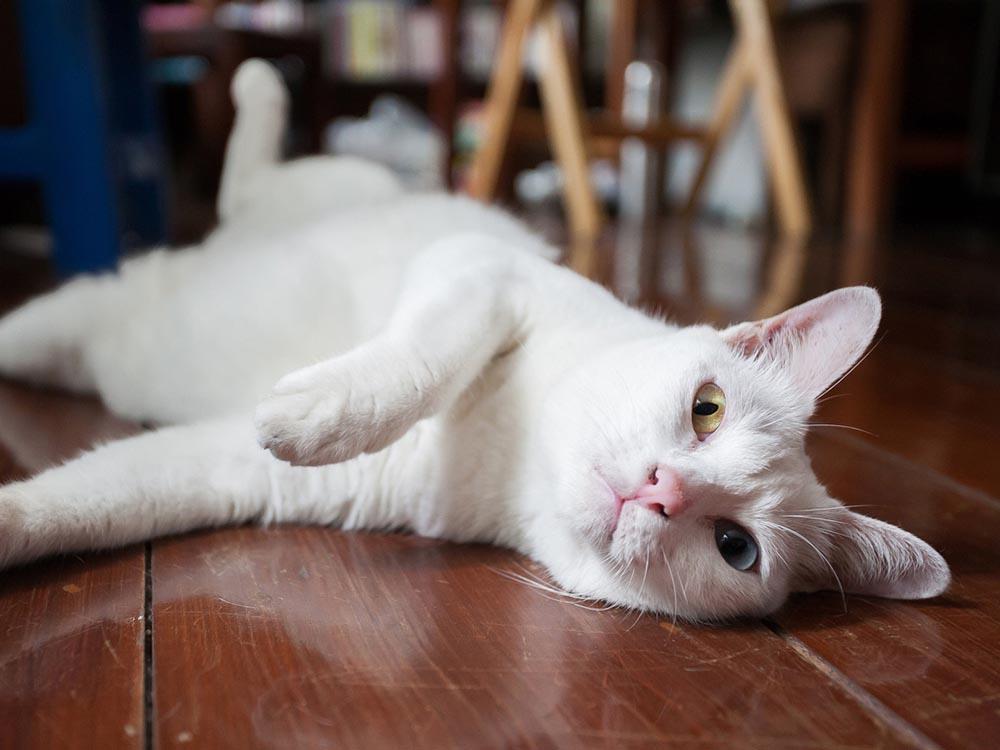
gopfaster / iStock
The Khao Manee cat is one of the most expensive cats in the world, and their unique and beautiful look goes a long way toward explaining why. Sometimes called the Diamond Eye cat, they originated in Thailand and have been around for hundreds of years. They are solid white with a short, silky coat.
They can have two blue eyes, two gold eyes, or one of each. They’re generally a pretty healthy breed but often have congenital deafness in one or both ears. Unlike some of the fluffier breeds we’ve mentioned, these cats are very active, vocal, and need a lot of playful stimulation to keep their intelligent minds occupied.
Weight: 8 to 11 pounds
Lifespan: 10 to 12 years
Best Characteristic: Curious

Beton Studio / AdobeStock
The Scottish Fold is known for its little folded-down ears, a cute characteristic that is the result of a natural dominant gene mutation. The mutation affects the cartilage throughout the body, which is what causes the ears to point down toward the face. The downside of this condition is that, over time, it can cause issues with this breed’s joints, which can be painful for them and require medical intervention.
Scottish Folds are perhaps best-known for their blue coats, but they come in several colors, including “shaded silver,” which is off-white. They’re very smart and affectionate, as well as quite vocal. They like kids and other animals but can also be good solo pets as long as they have the loving attention of their one special person.
Weight: 6 to 13 pounds
Lifespan: 12 to 15 years
Best Characteristic: Sweet-natured
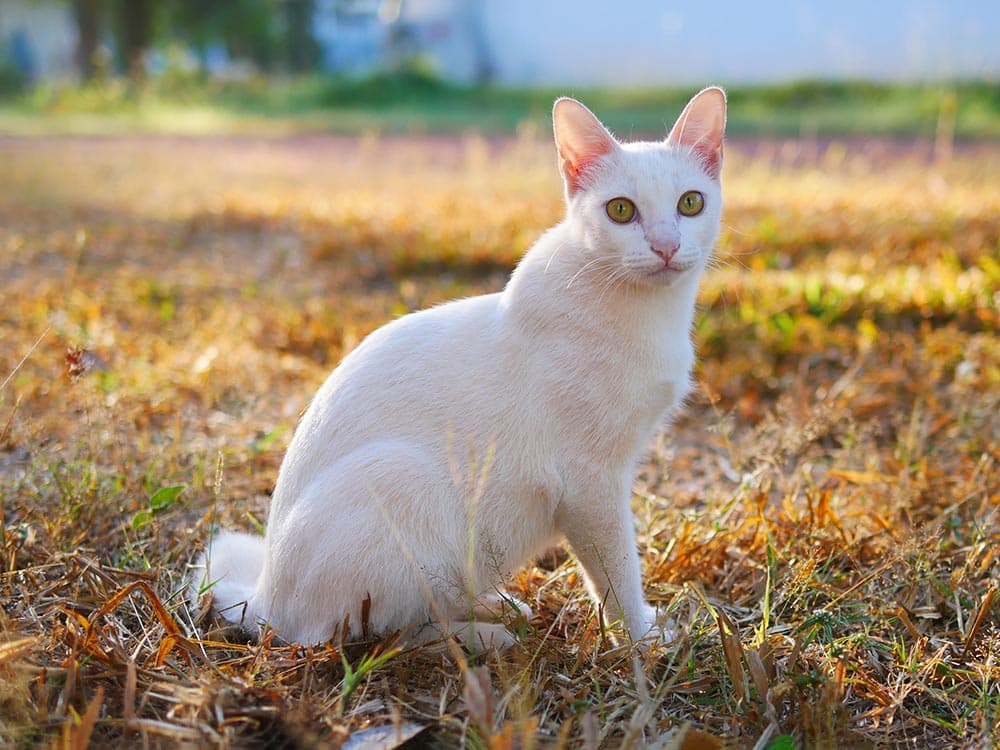
Ch_Kamonram28 / Shutterstock
You might recognize these little white cats as the “waving cat” figure, a popular sign of good luck in Japan. They have a very distinctive tell — a naturally bobbed tail — from which their name is derived. Their little bunny rabbit-like puff sits on top of strong haunches, which is an expression of a dominant gene found in the breed. Japanese Bobtails come in various colors, but the lucky cat’s calico is the most recognizable.
This breed is considered one of the most chatty of all cat breeds; lots of little distinctive chirps and purrs fill out their vocabulary. They’re not big shedders but do need to be brushed occasionally. They’re also very affectionate and loving lap cats but will greet you at the door like a dog and love to play games.
Weight: 6 to 10 pounds
Lifespan: 15 to 18 years
Best Characteristic: Conversationist
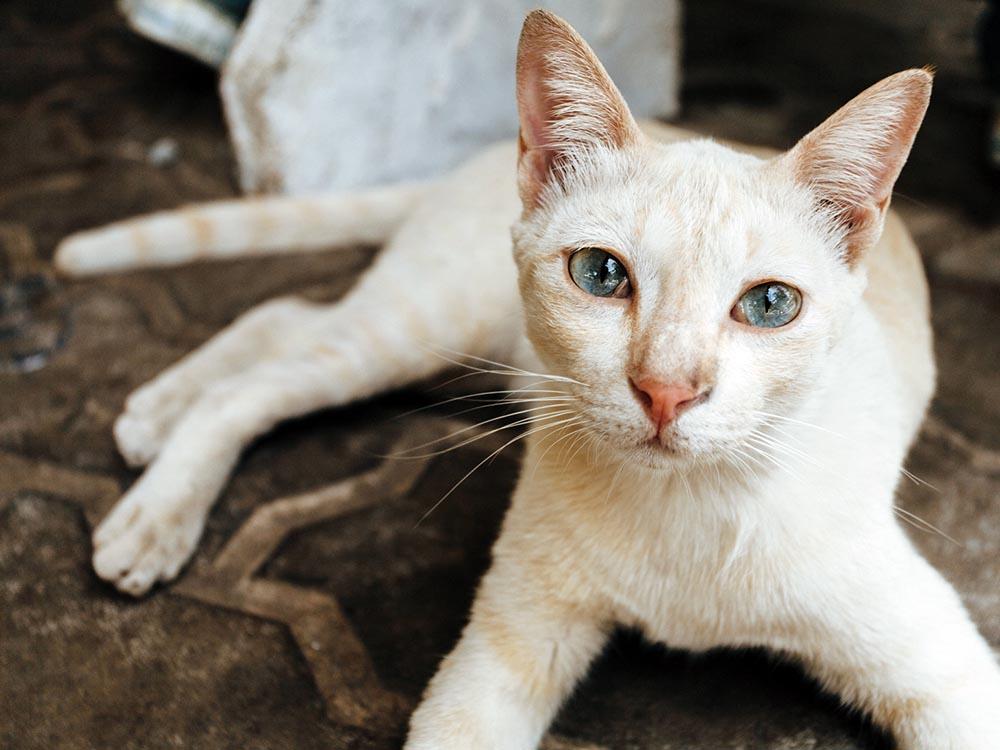
EASY 2 SHOOT / Stocksy
The Siamese cat is native to Thailand, but became very popular in Europe and North America during the 19th century. These kittens are born white, but their fur color and markings darken as they age. Siamese come in four different marking colors — seal, chocolate, blue, and lilac.
They’re a great family pet — gentle, playful, and social. They need a lot of entertainment to stay occupied, or they’ll find something to do, which you might not want. Siamese cats can be incredibly noisy and demanding, which can frustrate people who don’t have time to play with or cuddle them. They also like to be with other animals, so it’s best to adopt two at once.
Weight: 6 to 10 pounds
Lifespan: 10 to 20 years
Best Characteristic: Lovebug
Yep! Pure white is a rare cat color; it’s estimated that only five percent of the cat population is white. Many cat breeds can sport a white coat, but most are bi-color, tri-color, or have patterns and markings. Other cat breeds that can have white coats include:
White cats are considered generally healthy but have an increased risk for certain health conditions.
White cats can be prone to congenital deafness, though the severity of that condition may vary. For example, the genetic mutation that causes some cats to have blue eyes and white fur is linked to deafness.
Studies show that over 17 percent of white cats are born with some deafness; the number jumps up to 40 percent for cats with one blue eye and grows to a whopping 80 percent for cats with both blue eyes. Deaf cats tend to adapt to the condition well, however, and with a few adjustments, they can communicate with people quite well and be trained. While these cats are considered less adoptable, they still make great pets.
White cat pet parents should be on the lookout for sunburn, because these cats have less melanin in the skin under their fur, which makes them more vulnerable to skin cancer. Limit white cats’ time in the sun, get them checked regularly, and watch for bumps or new marks on their ears, nose, and eyelids.
There is a myth that white cats are also prone to blindness, most likely because they frequently have brightly colored eyes. But it’s just a myth; white cats are no more likely to be blind than any other color cat.
No, white cats are not necessarily albino. Most white cats simply have the gene for white fur but do not lack pigmentation completely. Albinism is a genetic condition which prevents all pigmentation in the skin, fur, and even the eyes, and could theoretically arise in any breed.
No, white cats and white kittens are not better for allergies. Allergens differ by cat — however, there is no proof that lighter-color cats (or even longer-hair cats) produce fewer of them. Some studies have found that male cats may produce more allergens, but no cat is truly hypoallergenic.
A cat’s lifespan differs by breed, but not coat color. It’s also increased by limiting outdoor exposure, proper healthcare, and nutrition. While a Persian can live more than 15 years, a Scottish Fold will probably only live up to 15 years. (The average domestic cat lives up to 20 years.)
White cats do not skew towards one gender or another. In contrast, Calicos — who are not completely white, but frequently have some white coloring — are usually female.
Coat color does not determine how loving a cat is. A cat’s upbringing (specifically, if socialized to humans at an early age) and unique personality will shape their affection levels. Additionally, many (not all) white cats are born hearing impaired, which could impact their response to your voice.
Many white cats are available for adoption at local shelters and rescue groups across the United States. Start your search for a friendly white cat at adoptapet.com
Cat Breeds With Congenital Deafness
Some dogs and cats prone to sunburn - How to protect your animal from skin damage
Albinism in the domestic cat (Felis catus) is associated with a tyrosinase (TYR) mutation
Veterinary Genetics Laboratory Albino Cats
The International Cat Association Breed List
Are White Cats More Likely to Be Deaf?
Teaching and Training a Deaf Cat
Is Your Cat's Personality Influenced by Coat Color?
Blue Cross: Hypoallergenic Cats

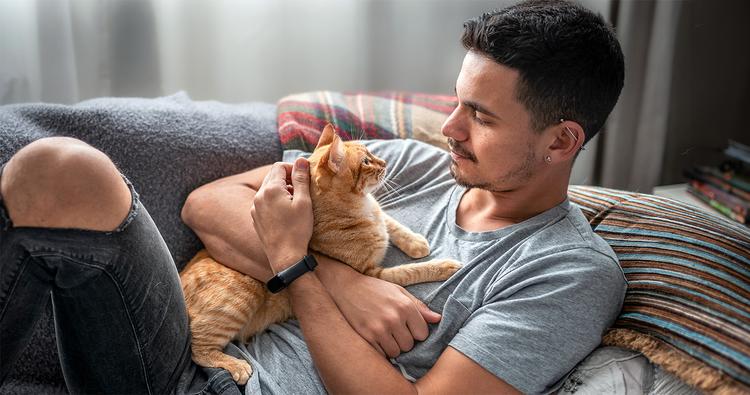
Adoption Advice

Breed Info
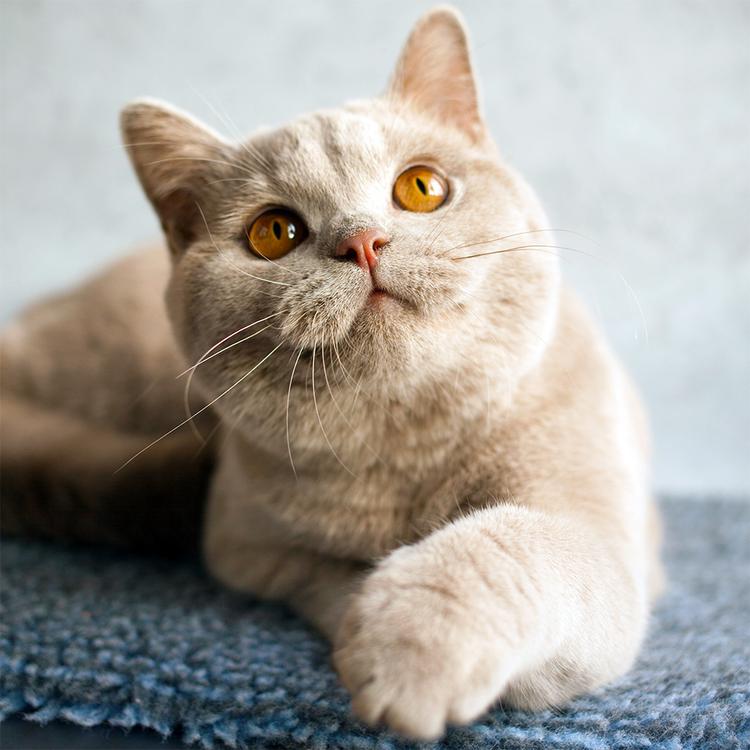
Breed Info
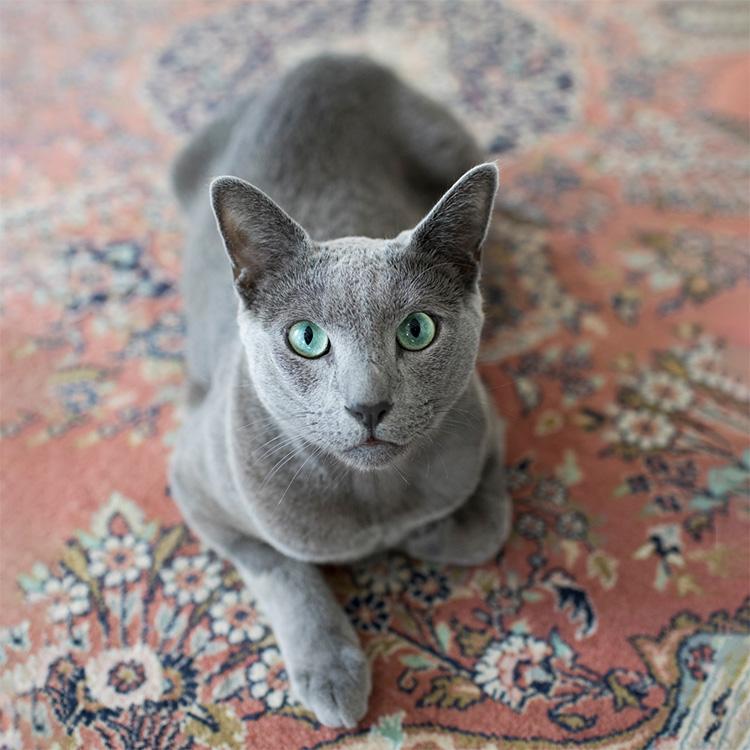
Adoption Advice
Adopting a gray-colored kitty? Get inspired with this list of gray-themed cat names and find the perfect fit for your cat.

Adoption Advice
Are you thinking of adopting a cat? Here are four reasons to adopt one of these often-overlooked kitties.
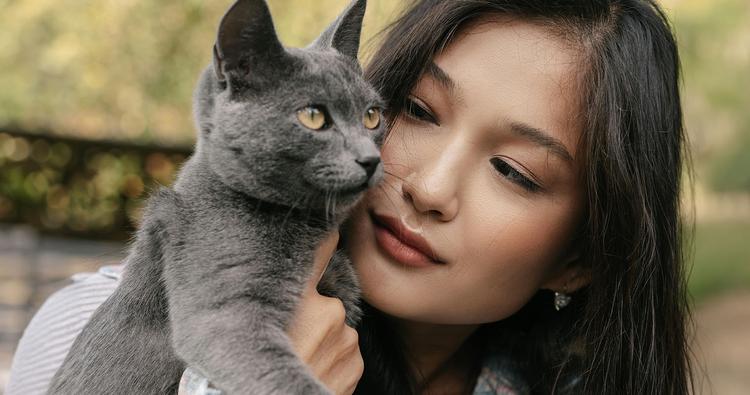
Adoption Advice
Adopting a kitty is a major commitment, but it doesn’t have to be a scary one. Here’s how to know when you’re ready to be the best pet parent ever.
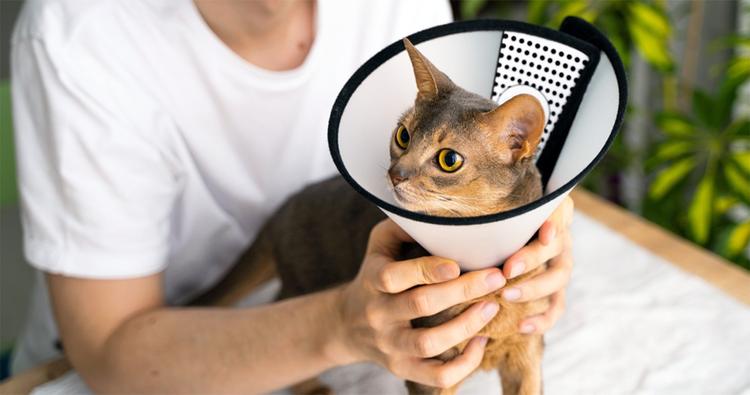
Adoption Advice
Here is why spaying or neutering your cat is important, and what to expect.
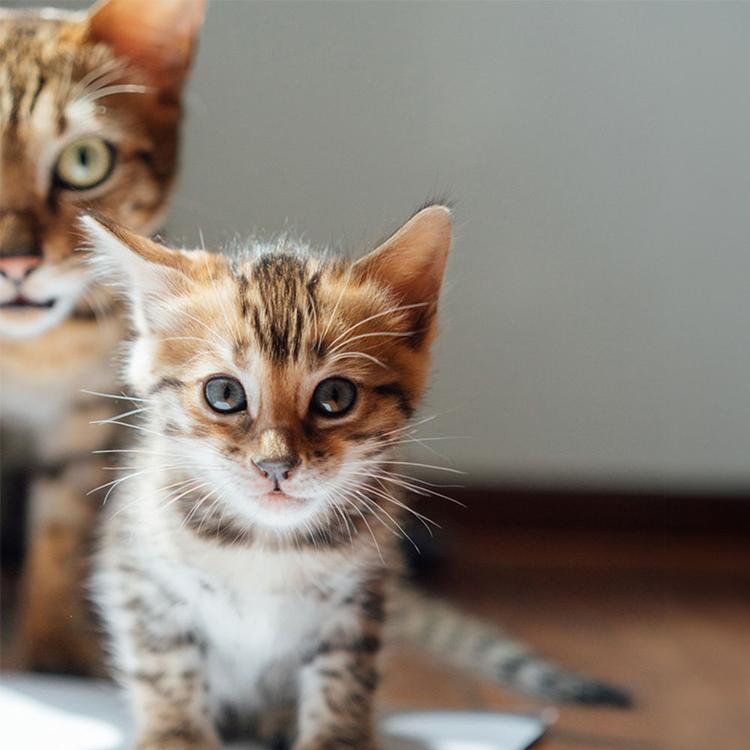
Adoption Advice
Considering cat adoption? Learn more about the pros and cons of adopting kittens.

Adoption Advice
Adopting a brown cat? Get inspired with this list of brown cat names and find the perfect fit for your kitty.


Breed Info
From silky coats to cloud-like fur, meet the fluffiest kitties around.

Adoption Advice
Are you wondering which type of cat will match your brand of human personality? Read on for some helpful advice.